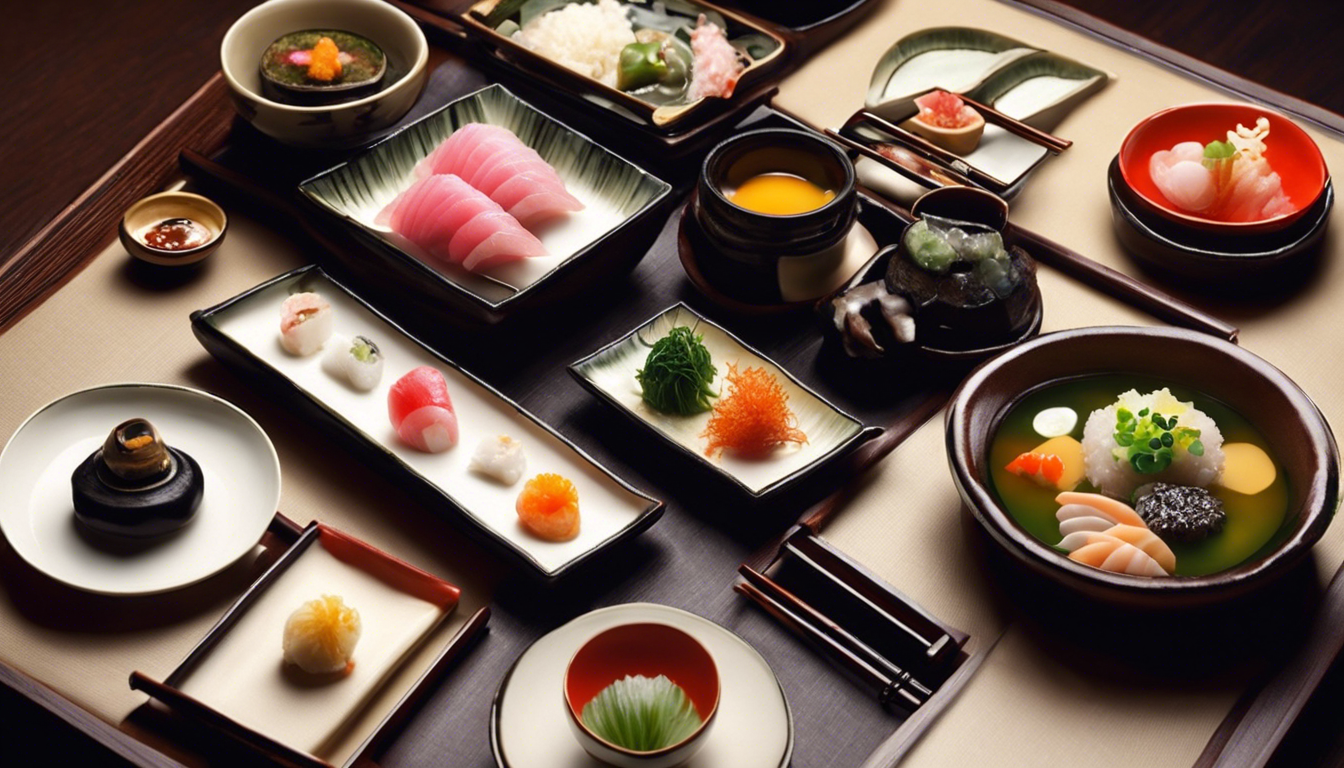If you consider yourself a foodie with a passion for exploring diverse culinary experiences, then kaiseki dining should be at the top of your list. This traditional Japanese cuisine isn’t just a meal; it’s a beautifully orchestrated journey that engages all your senses. In this article, we will take you through the rich history of kaiseki, its essential components, and why seasonality and presentation play pivotal roles in this exquisite dining experience. So, let’s dive into the art of kaiseki dining and discover where you can savor its authentic flavors!
Key Takeaways:
- Kaiseki dining is a traditional multi-course Japanese meal that emphasizes seasonal ingredients.
- The art of kaiseki has evolved from simple tea ceremonies into a refined gastronomic experience.
- Each kaiseki meal is carefully structured to create a balance of flavors, textures, and colors.
- Presentation plays a crucial role in kaiseki, making the dining experience visually stunning as well as flavorful.
- To truly experience kaiseki, seek out restaurants that specialize in authentic preparations of this culinary art.
Introduction to Kaiseki Dining
Kaiseki dining is truly a captivating culinary experience that goes far beyond the mere act of eating; it’s an art form steeped in tradition and seasonal ingredients. Picture yourself stepping into a serene, intimate setting, where each dish is a carefully curated masterpiece aimed at delighting both the palate and the eyes. This multi-course meal, which originates from Japan, emphasizes harmony and balance, showcasing everything from delicate sashimi to beautifully arranged vegetables, all presented with a meticulous attention to detail. For foodies, kaiseki is a journey as much as it is a meal, inviting you to savor the nuances of each ingredient while celebrating the changing seasons through vibrant flavors and textures. From the first bite to the final course, kaiseki dining envelops you in a world where food becomes an exquisite expression of culture and mindfulness.
The Origins and Evolution of Kaiseki
Have you ever found yourself enchanted by the delicate artistry of kaiseki dining? This traditional Japanese culinary experience has fascinating origins that go back to the tea ceremonies of the 16th century. Originally, kaiseki referred to the simple meal served alongside tea, featuring seasonal, often minimalist ingredients that highlighted natural flavors. Over the years, it evolved into a multi-course feast showcasing the chef’s skill and creativity, transforming into a veritable art form. Today, kaiseki dining is a symphony of colors, textures, and flavors, meticulously prepared and beautifully presented in harmony with nature’s seasons. Each course tells a story, often inspired by the environment and local produce, making it a unique gastronomic journey that any food lover should embark upon! So, the next time you’re seeking an unforgettable dining experience, remember that kaiseki is not just a meal; it’s a celebration of Japanese culture and culinary craftsmanship.
‘Food is not just what we eat; it is the art of creating, experiencing, and sharing moments.’ – Unknown
Key Components and Structure of a Kaiseki Meal
Kaiseki dining is truly an art form, intricately woven with tradition and seasonal ingredients that showcase the best of Japanese culinary culture. At its heart, a kaiseki meal features a series of carefully curated courses, each designed not merely to tantalize your taste buds but to engage all your senses. Typically starting with an appetizer, like a delicate sashimi platter, the meal progresses through various dishes, each more complex than the last—think graciously plated vegetables, immaculately grilled fish, and a comforting bowl of miso soup. The beauty of kaiseki lies in its structure: it balances color, flavor, texture, and even temperature, all while respecting the ebb and flow of the seasons. A kaiseki dinner might finish with a light dessert, such as seasonal fruits or a delicate matcha-infused sweet, leaving you in a state of blissful satisfaction. So, gather your foodie friends and prepare to embark on a multi-sensory journey that celebrates the essence of each ingredient, making every bite a moment to cherish.
Seasonality and Presentation in Kaiseki Cuisine
When it comes to kaiseki dining, one of the most captivating aspects is its deep connection to seasonality and presentation, which transforms each meal into a vivid celebration of nature’s bounty. Imagine sinking your chopsticks into a meticulously arranged lacquered tray, where each tiny dish tells a story about the time of year and the ingredients at their peak freshness. In spring, you might encounter delicate cherry blossom motifs made from rice or fish, capturing that fleeting beauty, while autumn could surprise you with vibrant hues of persimmon and chestnuts, evoking the warm, rich colors of falling leaves. It’s not just the flavors that excite a foodie’s palate; it’s the artistry involved in how each course is served. The careful placement of an edible flower or the choice of ceramic wear that mirrors the seasonal theme elevates the experience from mere eating to an immersive journey through Japan’s seasonal landscape. For those who appreciate not just what’s on their plate but the story behind it, kaiseki dining truly offers a feast for the senses.
The Role of Ingredients in Kaiseki Dining
When it comes to kaiseki dining, every ingredient plays a starring role, transforming each meal into a beautifully curated culinary journey. Imagine sitting down at a table where every dish tells a story, and that story begins with the freshest seasonal ingredients carefully selected for their flavor and aesthetic. From the delicate sweetness of sakura shrimp to the vibrant greens of locally sourced vegetables, these components aren’t just put on a plate—they’re harmoniously crafted to showcase the essence of Japan’s changing seasons. It’s all about balance and simplicity, allowing each flavor to shine while complementing the others in the course. The chef’s art lies not just in cooking but in choosing ingredients that evoke a sense of place, time, and tradition. So, for foodies eager to explore kaiseki dining, it’s essential to appreciate how these carefully chosen ingredients elevate a meal into a breathtaking experience, where each bite is a delightful exploration of Japan’s rich culinary heritage.







